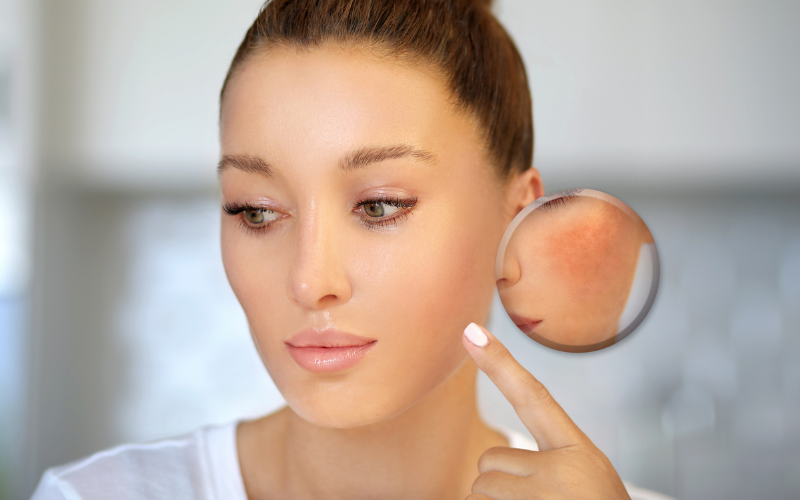
Melasma
What is Melasma?
Melasma is a skin condition characterized by brown or blue-gray patches or freckle-like spots. It’s often called the “mask of pregnancy.” Melasma happens because of the overproduction of the cells that make the color of your skin. It is common, harmless and some treatments may help. Melasma usually fades after a few months.
Melasma can have several causes, such as hormonal changes during pregnancy, use of contraceptives, use of some medications, or aging, for example. Melasma is more common in areas exposed to the sun, such as the face. It is essential to use sunscreen so new lesions do not appear.
Melasma is curable, and the best treatment varies according to the type, the location of the affected body, and the depth of the spot, which can be superficial, or epidermal, deep, or dermal, and mixed, so it is important to talk to the dermatologist to decide on the optimal treatment.
Types of Melasma
> Epidermal: it happens when the formation of melanin settles only in the epidermis - the first layer of the skin, which has the function of protecting the body from external aggressions;
> Dermal: in this case, the melasma reaches the deepest layer of the skin - the dermis, located between the epidermis and the hypodermis - which makes the stains more difficult to be treated;
> Mixed: This is when blemishes affect both the superficial and deep layers of the skin.
To treat melasma, whitening creams can be used, or esthetic treatments such as:
> Chemical peeling
Chemical Peeling is a procedure used to remove the outer layers of skin that are damaged.
It is worth remembering that no procedure is able to eliminate the dilated pores once and for all, but a daily care routine and follow-up with your beautician reduces the problem and makes it less visible.
> Microneedling
Over time, the body loses its capacity to produce collagen, which causes flaccidity, wrinkles, and expression lines.
Microneedling is one of the best techniques when it comes to benefiting the skin and its main objective is the induction of collagen through stimulation made with microneedles, which penetrate the skin, favoring the production of collagen fibers.
How to prevent melasma?
Hormonal factors are more difficult to control, so the best way to protect your skin from dark spots of melasma is to avoid sun exposure whenever possible.
Therefore, invest in the daily use of sunscreen with SPF 30, at least, and in physical barriers, hats, caps, large sunglasses, and today there are excellent make-ups on the market that effectively cover the skin.
Although it is more common in women, Aesthetician Luci warns: “The problem can also arise in men, especially brown skin - since skin color is also an important factor in the development of spots. Black and yellow skin are more likely to develop the disorder,” she explained.
Treatment can be done in the office and at home. When you notice the problem, it is important to see your beautician, who will know the best treatment for your type of melasma.
The treatments can be done in the office, through whitening peels and lasers, however, it continues at home with the use of products with whitening actives, such as retinoic acid (vitamin A), hydroquinone (this under the supervision of a qualified professional to prevent "rebound effect") and vitamin C," said the expert.
During the summer months, melasma often becomes more prominent. In conjunction with topical treatments, superficial chemical peels containing salicylic acid and glycolic acid will often enhance results and improve the skin's appearance.
The common melasma triggers are known as "hormonal triggers", including birth control pills, hormone-releasing intrauterine devices, hormone therapy, and vitamin supplements such as those used for pregnancy, nursing, and menopausal symptoms.
Less common triggers include scented or deodorant soaps, toiletries, cosmetics, or fragrances that may cause toxic reactions. Rarely, autoimmune thyroid disorders, chronic stress, or adrenal dysfunction can cause or worsen melasma.
